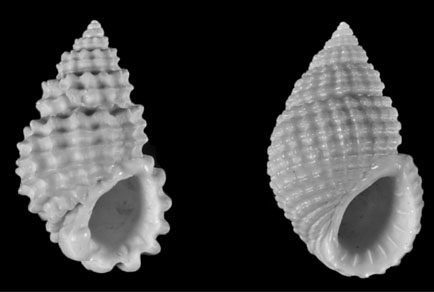Abstract
Alvania baldoi n. sp. and A. dimitrii n. sp. are described from the Plio-Pleistocene of Italy. A. baldoi n. sp. is characterized by clathrate/cingulated sculpture of delicate axial and spiral elements forming knobs. It is closer to the species placed in Alvania Risso, 1826 s.s. than to those grouped within Acinopsis Monterosato, 1884 which is usually treated as a subgenus or synonym of Alvania. A. dimitrii n. sp. is characterized by an almost globose, conical shell bearing a clathrate pattern of subequal spiral and axial elements forming rounded tubercles. It also shows pronounced denticles and a crenulated outer lip. It is intermediate in shell characters between Alvania s.s. and Acinopsis, and closely resembles A. baldoi n. sp. Both the described species have a paucispiral protoconch indicating a non-planktotrophic larval development. Taphonomic and taxonomic information on the fossil sites indicates that A. baldoi n. sp. lived on the mid to lower shelf, whereas A. dimitrii n. sp. presumably inhabited lower shelf to upper slope environments. The morphological features of the new species described are an example of the difficulties in separating some of the nominal genus-group taxa previously recognized that are now usually treated as synonyms of Alva-nia.

